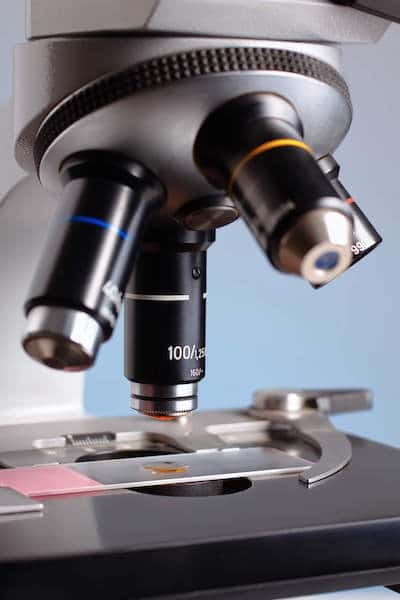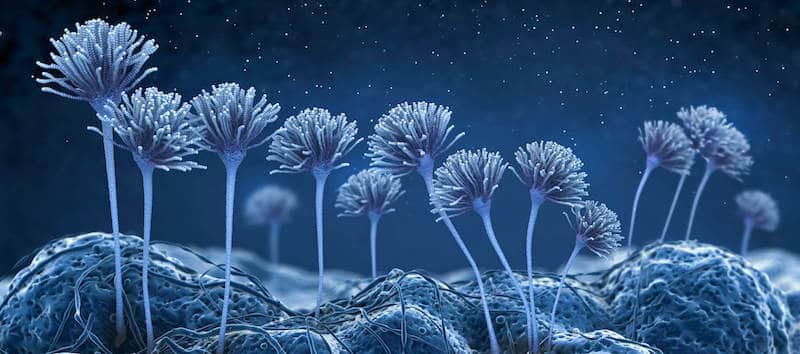There are a lot of misconceptions and misinformation out there, especially with how prominent the internet is nowadays. Like, the idea that bulls hate red? Nope, that’s fake news! They’re actually partially color-blind and can’t even see red. Also, that little knowledge nugget that dogs sweat by salivating? Wanh-wanh, that’s wrong too! They’re actually just panting to cool the heck down, and their paws are the ones that sweat. Another misconception: Mold removal vs mold remediation!
What’s the real difference, which is better, and what do you really need?

It’s important information to know, but the answers aren’t always correct. Over the years, the facts about mold have become a bit skewed. The lack of awareness and discussion about this fungus among us and the impact it can have on our health is partly to blame. It’s not just a societal issue, though. The remediation industry itself is in a bit of a kerfluffle about mold removal vs mold remediation.
Pro-tip, they are different, and one is vastly superior! Here’s why.
BUT FIRST, THE DOWN LOW ON MOLD
Before getting into mold removal vs mold remediation, it’s best to have a solid understanding of mold itself. Knowledge is power, after all. Plus, the more information you have about mold, the easier you’ll be able to see the difference between mold removal vs mold remediation.
FAST MOLD FACTS
Mold is a type of fungus with over 100,000 species identified so far.¹’² Each species reproduces by creating and releasing microscopic spores. The process is incredibly similar to how a dandelion puff releases those fluffy seeds into the air. Spores are the seeds in this scenario; the only difference is that they’re microscopic.

Like seeds, spores require a few things to transition into the world of the living and start to grow. Otherwise, they’ll just float about and remain a little solo spore forever. Being the hearty fungus that mold is, a spore only needs four basic components to survive and thrive.³
THESE FOUR INGREDIENTS FOR LIFE ARE:
- Food (they eat almost anything, even dust)
- Oxygen (this barely counts because they require so little, which is why mold can grow in walls)
- Temperature (most species prefer 40-90 degrees Fahrenheit, which is why your home is a haven, but some can live in extremes)
- Moisture (the often missing component)
MOLD IN YOUR HOME, THE ULTIMATE NO-NO
If a lucky spore lands on a surface with all four of the components present for 24–48 hours, it will level up and become a living, growing, reproducing mold colony. The keyword there was reproducing. As soon as the mold starts to grow, it will begin releasing spores into the air.
When this occurs in nature, it’s no big deal. Mold actually plays a huge role in certain environmental processes like decomposition. However, when mold starts growing in your house? All of those spores remain trapped within the walls of the home and will continue to build up like dust on a shelf. Except, again, they’re invisible. Some species of mold also produce microscopic toxins called mycotoxins that they release alongside the spores.⁴
An interesting side note is that while mycotoxins are regulated in our food, they are not regulated in our homes.⁵ Quite the brain puzzle that is, right?
The more particles mold releases, the worse the indoor air quality will be. Not to mention, homes are currently being built with energy efficiency in mind, which means there’s very little airflow between the indoor and outdoor environment. No airflow means almost all of those particles remain trapped inside and will tank the air quality even faster.
Poor indoor air quality can wreak havoc on the health of anyone inside the building, hence why knowing the difference between mold removal vs mold remediation is so crucial.
WHY SHOULD YOU CARE ABOUT MOLD REMOVAL VS MOLD REMEDIATION? FOR YOUR WELL-BEING!
Particles associated with mold are small.

So small that they can easily be breathed in and make their way into your lungs and body. The EPA categorizes these particles as particulate matter into two groups, both of which are inhalable.⁶
THESE TWO CATEGORIES ARE:
- PM10: particles that have a diameter of around 10 micrometers or less.
- PM2.5: fine particles that have a diameter of around 2.5 micrometers or less.
Since the particles are microscopic and pretty much everywhere, encountering a few throughout the day is unavoidable. Emphasis on only a few, though. As they make their way inside, the body will tag them as foreign invaders and deploy your immune system to get rid of them ASAP. Typically, it’s not a problem at all.
OKAY, SO THEN WHAT’S THE HEALTH DILEMMA?
The issue occurs when you’re not just exposed to a few moldy particles or mycotoxins throughout the day, but an entire army of them. Which is pretty much exactly what happens when mold grows in a home. It’s kind of like living in a moldy air bubble and continually breathing in all of that particle-filled air…
First of all, yuck. Second of all, our poor immune systems. They’ll try their best to keep up with the onslaught, but eventually, they could get overrun, bogged down, or malfunction.
When it comes to exactly how mold exposure affects health, every experience is different. Factors such as length of exposure, species of mold, presence of mycotoxins, genetics, and immune system status all play a role. While one person in a home may only get the occasional runny nose, another may develop a list of 30 symptoms.
Researchers are hard at work trying to nail this subject down, but what they do know is that individuals with compromised or developing immune systems are at greater risk for developing symptoms faster and to a greater extent. So, children, the elderly, and those with preexisting conditions are at the top of the symptom list. ⁷’⁸’⁹’¹⁰

MOLD ILLNESS SYMPTOMS CAN INCLUDE:
- Coughing
- Respiratory issues
- Rashes
- Hair loss
- Digestive problems
- Weight gain
- Chronic fatigue
- Neurological issues
- Brain fog
Mold exposure can also work in tandem with other autoimmune conditions like Lyme disease and Candida to create the perfect storm of health issues. This potential for adverse health reactions is why it’s important to deal with mold quickly and correctly. That includes understanding mold removal vs mold remediation.
MOLD REMOVAL VS MOLD REMEDIATION: WHAT’S THE DIFFERENCE?
The easiest way to explain the difference between mold removal vs mold remediation is to define each term.
MOLD REMOVAL
Exactly like it sounds, mold removal involves the act of eliminating the growing colony of mold in a home. For instance, if this fungus starts to grow on the corner of a cabinet, mold removal would take care of that specific and visible colony. Nothing more, nothing less.
MOLD REMEDIATION
Remediation is the act of not only removing the mold but also fixing the source that led to the mold problem in the first place. The thorough process involves removing the byproducts that mold creates as well, like all of those mold spores and potential mycotoxins. Keep in mind that bacteria can also be present too, depending on the source of the water event.

THE BETTER OPTION
As you can see, the difference is that remediation is much more all-encompassing. The mold colony itself isn’t the only issue when attempting to get rid of this fungus. Mold spores are all over the area, and mycotoxins and bacteria might be present as well. All of which can negatively impact the health of those exposed.
This is often the reason that remediation projects fail. Instead of digging into the science behind mold and the extent of contamination, as well as how to properly remediate it all from a home, companies have been practicing mold removal.
Yes, that one mold issue might be gone, but the rest of the contamination is still there. It’s just invisible. By leaving those harmful particles behind, you and your family will continue to experience exposure and any related symptoms that come along with it.
Not to mention, if the source that led to the water event and mold growth is left behind, the fungus can come right back. Again, continued exposure can lead to further health issues as the indoor environment will once again be filled with harmful particles. That’s also on top of the money wasted on the failed remediation project. Because that’s what this scenario really is: a failed remediation.
MOLD REMOVAL VS MOLD REMEDIATION: WHAT YOU NEED
Obviously, remediation is the way to go in the battle of mold removal vs mold remediation. And, it is what you should expect when hiring a team of professionals. As mentioned before, simply practicing mold removal can lead to your family continuing to suffer from exposure, and that is unacceptable.
How do you know if a company knows the difference between mold removal vs mold remediation? First and foremost, their priority should always be your health and the health of your family. They should understand the importance of their job and pledge to ensure your home becomes a safe environment once again.

The remediation company you choose should also stand on three pillars for a successful project.
THESE THREE PILLARS ARE:
- Remediate the mold properly
- Fix the source that led to the mold problem in the first place
- Eradicate all of the contamination that was created by those sources, including mycotoxins and bacteria
If they can’t tick each of these boxes, they shouldn’t take the job. For example, do they know how to properly remove mycotoxins and bacteria because they require a more thorough cleaning process? Do they know how to properly assess mold inspection results to understand the full scope of the problem? Are they aware of every moldy issue in the home? Are they going to fix the issue that led to the mold growth in the first place? All of these are important components to ensuring the remediation protocol is successful.
At the end of the day, you should feel confident that when they leave your home, the mold problem is resolved and you and your family won’t continue to be exposed to a slew of harmful particles.
PERIOD, THE END
The battle of mold removal vs mold remediation should have ended long ago. Its continuation is why it’s so important to build a solid foundation of moldy knowledge so that you can tackle any fungus problem that comes your way. Because chances are, you’re going to have to battle indoor mold growth at some point in time while living in your home; it’s a seriously persistent fungus!
As long as you know what to expect and how to correctly handle the problem, though, you’ll be golden. The key is to handle it properly and as soon as possible to limit the amount of contamination spreading to other areas of the home. One moldy issue can quickly turn into four or five mold factories throughout a home. Not only is that a ton of additional costs for remediation, but it is also just not good for your health.

Maintaining a safe home environment is crucial for healthy living (even if we don’t think about it as often as we should). Knowing the difference between mold removal vs mold remediation is a great first step to ensuring your indoor space isn’t harming you and your family. After all, you take an average of 20,000 breaths a day, and chances are, most of those inhalations are taken right within your very own home.¹¹ What’s floating around in that air matters!
Health begins at home.
Still Have Questions?
A member of our team is here to help! Click on “Get Started ➤” below to book a consultation with a member of the HOMECLEANSE team. We have a few quick questions that will help us put together a roadmap to solve or prevent all of your mold problems.
Two minutes of your time could lead to better health for you and your family.
- Environmental Protection Agency. (n.d.). Mold. EPA. Retrieved from https://www.epa.gov/mold.
- Centers for Disease Control and Prevention. Basic facts about mold and dampness. Centers for Disease Control and Prevention. Retrieved from https://www.cdc.gov/mold/faqs.htm.
- Lstiburek, J., Brennan, T., & Yost, N. (2002, January 15). Rr-0208: What you need to know about mold. Building Science Corporation. Retrieved from, https://www.buildingscience.com/documents/reports/rr-0208-what-you-need-to-know-about-mold/view.
- World Health Organization. (n.d.). Mycotoxins. World Health Organization. Retrieved from https://www.who.int/news-room/fact-sheets/detail/mycotoxins.
- FDA. (2016, September 30). Food and Drug Administration COMPLIANCE PROGRAM GUIDANCE MANUAL. Food and Drug Administration. Retrieved from https://www.fda.gov/media/140749/download.
- EPA. (n.d.). Health and Environmental Effects of Particulate Matter (PM). EPA. Retrieved from https://www.epa.gov/pm-pollution/health-and-environmental-effects-particulate-matter-pm.
- Environmental and Occupational Health Assessment Program, & Environmental and Occupational Health Assessment Program, & Health Science Section, Mold Basics for Primary Care Clinicians (2009). Hartford, CT; Connecticut Department of Public Health. , H. S. S., Mold Basics for Primary Care Clinicians 1–10 (2009). Hartford, CT; Connecticut Department of Public Health.
- Curtis, L., Lieberman, A., Stark, M., Rea, W., & Vetter, M. (2004). Adverse health effects of indoor molds. Journal of Nutritional & Environmental Medicine, 14(3), 261-274.
- Bush, R. K., Portnoy, J. M., Saxon, A., Terr, A. I., & Wood, R. A. (2006). The medical effects of mold exposure. Journal of Allergy and Clinical Immunology, 117(2), 326-333
- Fisk, W. J., Lei-Gomez, Q., & Mendell, M. J. (2007). Meta-analyses of the associations of respiratory health effects with dampness and mold in homes. Indoor air, 17(4), 284-296.
- Brown, A. (2014, April 28). How Many Breaths Do You Take Each Day? [web log]. Retrieved from How Many Breaths Do You Take Each Day?
Must-Have Indoor Air Quality Tools
-

EC3 Laundry Additive
Add EC3 to every rinse cycle to rinse away mold, bacteria and musty odors from...
-
$23.00 SHOP NOW -
Sale

Intellipure Compact Air Purifier
Buy one Compact, get one free. Simply add one to your cart, and a second...
-
Original price was: $299.00.$199.00Current price is: $199.00. SHOP NOW -

Intellipure SuperV Whole House Air Purifier
Turn your HVAC into a filtration system, removing 99% of ultrafine particles including airborne mold,...
-
$2,000.00 – $2,995.00 SHOP NOW -

HomeCleanse Cleaning
Take your cleaning to the next level buying all the tools we use to keep...
-
$299.00 – $549.00 SHOP NOW -

Mold & Bacteria Contents Cleaning
Remove harmful pollutants that accumulate in the dust of your home. (Options available for renters...
-
$99.00 – $349.00 SHOP NOW -

EC3 Mold Solution Concentrate
Micro Balance EC3 Mold Solution Concentrate is a natural botanical that removes mold spores, bacteria,...
-
$33.00 SHOP NOW -
Sale

Industry-Leading Intellipure Ultrafine 468
The Intellipure® Ultrafine 468 features our proprietary DFS technology, which traps and eliminates potentially harmful...
-
Original price was: $999.00.$499.00Current price is: $499.00. SHOP NOW -

The Dust Test
The Dust Test is a comprehensive at-home test that helps you identify mold and toxins...
-
$274.00 SHOP NOW -
Sale

EuroClean 4 Gallon Hepa Vacuum
The Euroclean GD930HSP is a 4 Gallon Dry HEPA Vacuum that meets the EPA's standards...
-
Original price was: $849.00.$619.00Current price is: $619.00. SHOP NOW -

AprilAire E080 Professional Dehumidifier Bundle
Includes all the dehumidifier accessories you will need. Our Aprilaire E080 comes with a drain...
-
$1,499.99 SHOP NOW
